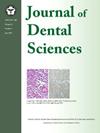加速衰老动物模型及其在牙科中的应用:综述
IF 3.1
3区 医学
Q1 DENTISTRY, ORAL SURGERY & MEDICINE
引用次数: 0
摘要
加速衰老模型越来越多地应用于衰老研究;然而,它们在牙科研究中的应用仍然相对有限。本综述调查了这些模型在口腔研究中的应用。按照PRISMA-ScR指南并在开放科学框架注册,对PubMed和Web of Science进行了系统搜索,以确定2020年1月至2025年3月期间发表的相关体内研究。符合条件的研究涉及口腔健康背景下加速衰老的动物模型。提取动物类型、诱导方法、衰老生物标志物(如P53、P21、P16、SA-β-gal)和叙事合成结果的数据。在筛选的377篇文章中,29篇符合纳入标准。确定了三种主要类型的模型:化学诱导的,物理应力诱导的和基于基因的。大多数研究集中在牙周炎(41.4%),其次是唾液腺功能障碍。研究的主要衰老特征包括细胞周期阻滞(79.3%)、衰老相关的分泌表型、氧化应激和溶酶体改变。37.9%的研究采用了糖尿病引起的衰老,小鼠是主要的动物模型(75.9%)。研究结果表明,加速衰老模型在口腔衰老研究中显示出前景,特别是在牙周炎和糖尿病相关疾病中。结合多种生物标志物可以提高模型的相关性,并支持老年口腔护理的针对性策略。本文章由计算机程序翻译,如有差异,请以英文原文为准。
Accelerated senescence animal models and application in dentistry: A scoping review
Accelerated senescence models are increasingly utilized in aging research; however, their application in dental studies remains relatively limited. This scoping review investigates the use of these models within oral research. A systematic search of PubMed and Web of Science was conducted, following PRISMA-ScR guidelines and registered with the Open Science Framework, to identify relevant in vivo studies published between January 2020 and March 2025. Eligible studies involved accelerated senescence animal models in oral health contexts. Data were extracted on animal types, induction methods, aging biomarkers (e.g., P53, P21, P16, SA-β-gal), and outcomes for narrative synthesis. From 377 screened articles, 29 met the inclusion criteria. Three primary types of models were identified: chemically induced, physically stress-induced, and genetically based. The majority of studies focused on periodontitis (41.4 %), followed by salivary gland dysfunction. Key aging features examined included cell cycle arrest (79.3 %), senescence-associated secretory phenotypes, oxidative stress, and lysosomal alterations. Diabetes-induced aging was employed in 37.9 % of studies, and mice were the predominant animal model used (75.9 %). The findings suggest that accelerated senescence models show promise in oral aging research, especially in periodontitis and diabetes-related conditions. Incorporating multiple biomarkers may enhance model relevance and support targeted strategies in geriatric oral care.
求助全文
通过发布文献求助,成功后即可免费获取论文全文。
去求助
来源期刊

Journal of Dental Sciences
医学-牙科与口腔外科
CiteScore
5.10
自引率
14.30%
发文量
348
审稿时长
6 days
期刊介绍:
he Journal of Dental Sciences (JDS), published quarterly, is the official and open access publication of the Association for Dental Sciences of the Republic of China (ADS-ROC). The precedent journal of the JDS is the Chinese Dental Journal (CDJ) which had already been covered by MEDLINE in 1988. As the CDJ continued to prove its importance in the region, the ADS-ROC decided to move to the international community by publishing an English journal. Hence, the birth of the JDS in 2006. The JDS is indexed in the SCI Expanded since 2008. It is also indexed in Scopus, and EMCare, ScienceDirect, SIIC Data Bases.
The topics covered by the JDS include all fields of basic and clinical dentistry. Some manuscripts focusing on the study of certain endemic diseases such as dental caries and periodontal diseases in particular regions of any country as well as oral pre-cancers, oral cancers, and oral submucous fibrosis related to betel nut chewing habit are also considered for publication. Besides, the JDS also publishes articles about the efficacy of a new treatment modality on oral verrucous hyperplasia or early oral squamous cell carcinoma.
 求助内容:
求助内容: 应助结果提醒方式:
应助结果提醒方式:


